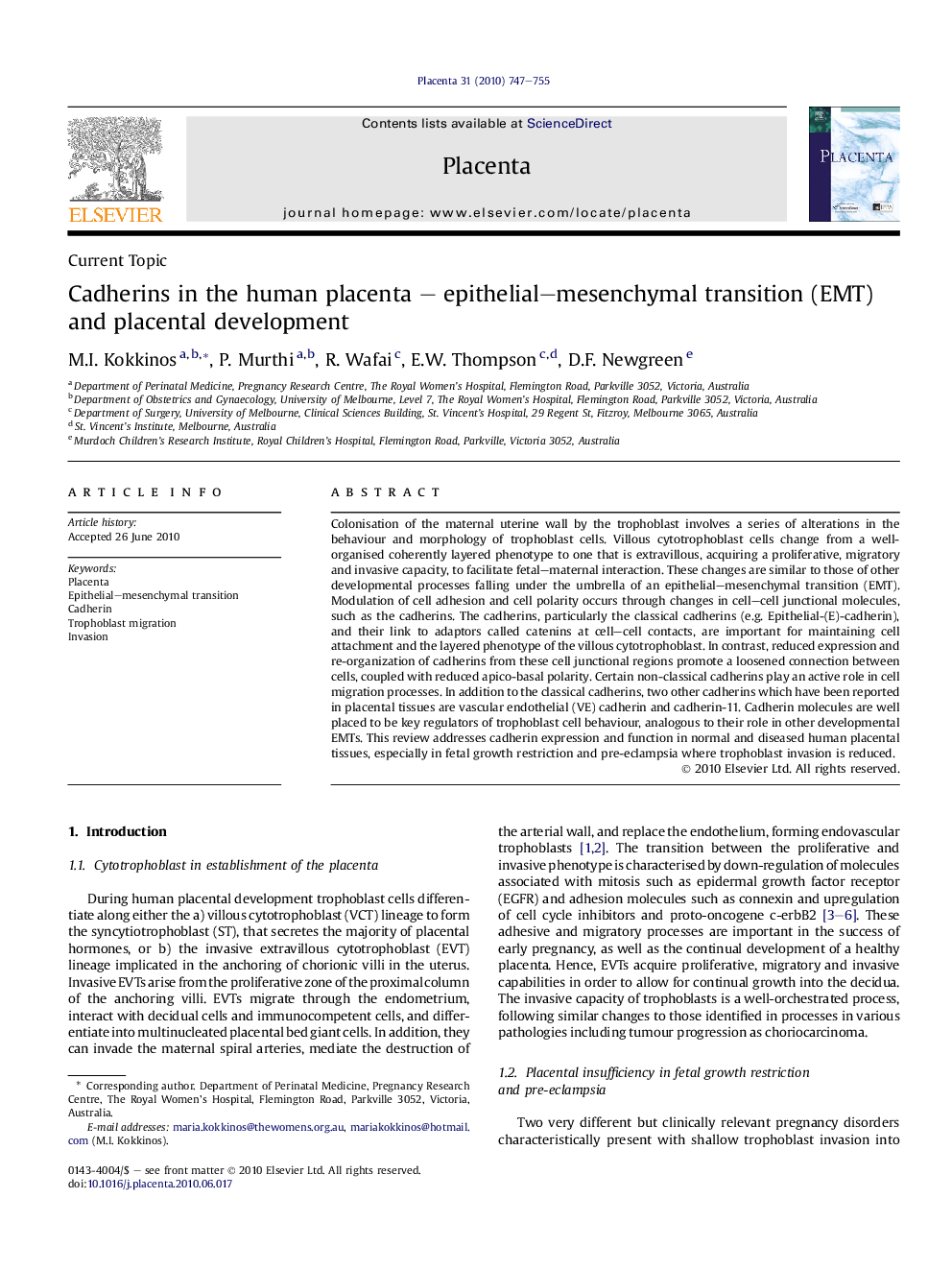| Article ID | Journal | Published Year | Pages | File Type |
|---|---|---|---|---|
| 2789456 | Placenta | 2010 | 9 Pages |
Colonisation of the maternal uterine wall by the trophoblast involves a series of alterations in the behaviour and morphology of trophoblast cells. Villous cytotrophoblast cells change from a well-organised coherently layered phenotype to one that is extravillous, acquiring a proliferative, migratory and invasive capacity, to facilitate fetal–maternal interaction. These changes are similar to those of other developmental processes falling under the umbrella of an epithelial–mesenchymal transition (EMT). Modulation of cell adhesion and cell polarity occurs through changes in cell–cell junctional molecules, such as the cadherins. The cadherins, particularly the classical cadherins (e.g. Epithelial-(E)-cadherin), and their link to adaptors called catenins at cell–cell contacts, are important for maintaining cell attachment and the layered phenotype of the villous cytotrophoblast. In contrast, reduced expression and re-organization of cadherins from these cell junctional regions promote a loosened connection between cells, coupled with reduced apico-basal polarity. Certain non-classical cadherins play an active role in cell migration processes. In addition to the classical cadherins, two other cadherins which have been reported in placental tissues are vascular endothelial (VE) cadherin and cadherin-11. Cadherin molecules are well placed to be key regulators of trophoblast cell behaviour, analogous to their role in other developmental EMTs. This review addresses cadherin expression and function in normal and diseased human placental tissues, especially in fetal growth restriction and pre-eclampsia where trophoblast invasion is reduced.
